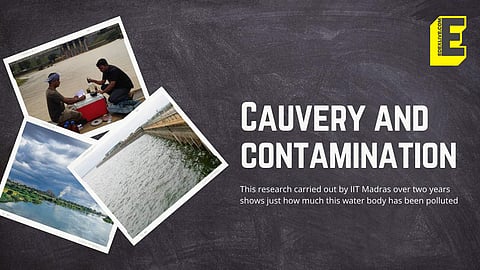

Research carried out by IIT Madras has not only raised concerns over high levels of pharmaceutical contaminants in the River Cauvery, but has also shown why those antibiotics pills we pop are not doing us any good. Prof Ligy Philip, Institute Chair Professor, Department of Civil Engineering, IIT Madras and Lead Researcher on this project goes on to highlight exactly how damning this news is. Especially since India is the world's second-largest pharmaceutical manufacturing country.
The researchers studied pharmaceutical contaminants, which include anti-inflammatories like ibuprofen and diclofenac, anti-hypertensives such as atenolol and isoprenaline, enzyme inhibitors like perindopril, stimulants like caffeine, antidepressants such as carbamazepine, and antibiotics such as ciprofloxacin. "The microorganisms in the water bodies are exposed to low concentrations of these antibiotics and over time, the anti-microbial genes that the microorganisms have developed resistance to antibodies and cause major diseases," says the professor. What this essentially means that all our antibiotics will be ineffective to these microorganisms and the diseases will become fatal if not cured. We are already seeing several instances of patients passing away even after successful surgeries because of microbial infection, she points out. "It is not the toxicity of the waters itself, but these microorganisms that can wreak havoc," she emphasises.
Started in 2018 with joint funding from the UK Natural Environment Research Council and Water Technology Initiatives of the Department of Science and Technology, Government of India, the IIT Madras researchers collected 22 samples, 11 from Karnataka and 11 from Tamil Nadu, at equidistant points. As many as 100 pharmaceutically-active compounds were found upon screening, but since qualification is difficult, 15 have been quantified. The emerging contaminants also included heavy metals, personal care products, pesticides, plastics and flame retardants.
Seasonal variation of emerging contaminants was also kept in mind and it was found that it was in the post-monsoon period that a higher level of different contaminants were found owing to reduced riverine flow and relentless discharge of waste. The researchers soon hope to submit a report to the Ministry of Environment, Forest and Climate Change.
